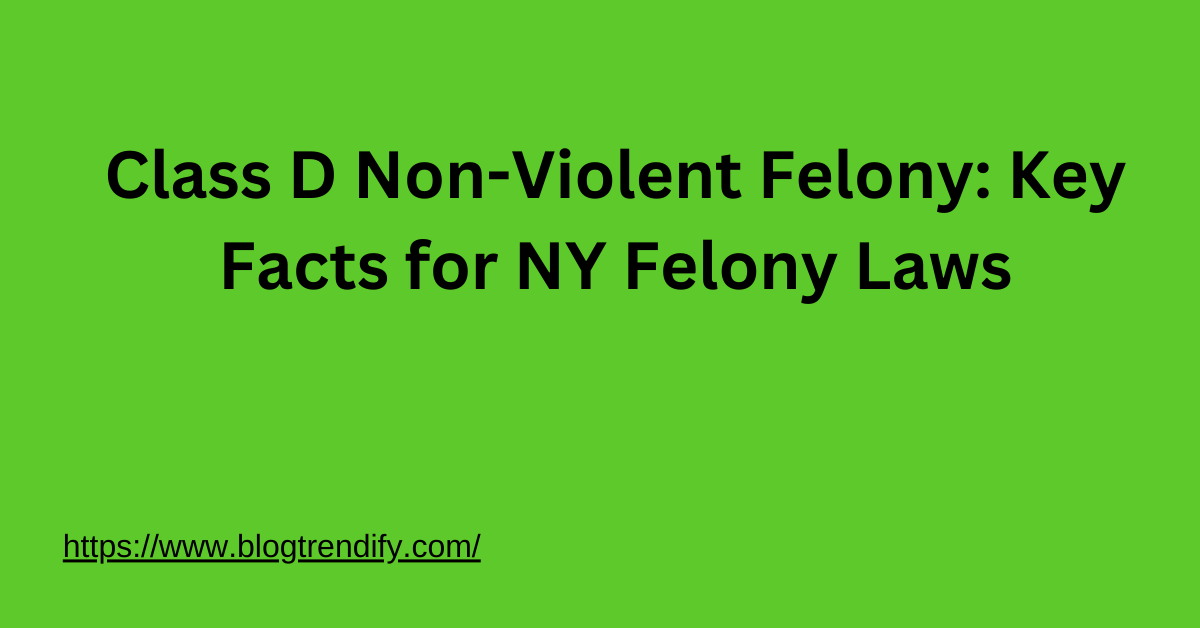Introduction
Table of Contents
ToggleHave you ever wondered what makes a crime fall under the most serious category of offenses? Crimes like murder, arson, and certain drug-related activities are considered Class A1 felonies, which carry the harshest penalties under the law. These crimes not only harm individuals but often leave a lasting impact on communities. Understanding these offenses can help us grasp why they are treated so severely and the consequences they bring.
In this article, we’ll break down Class A1 felonies in a way that’s easy to understand, shedding light on their legal definitions, examples, and the penalties attached. Let’s dive in and uncover the truth behind these grave offenses.
What Are Class A1 Felonies?
Class A1 felonies are the most serious crimes in the legal system, often punishable by life imprisonment or even the death penalty in some jurisdictions. These offenses involve severe harm or the threat of harm to individuals and society. The law categorizes them as “A1” due to their grave nature and far-reaching consequences.

The Gravity of First-Degree Arson
First-degree arson isn’t just about setting a fire. It involves intentionally burning a structure, often while endangering human lives. Imagine a reckless spark causing not just destruction of property but potentially fatal outcomes—this highlights the severity of arson.
Key Elements of First-Degree Arson
To classify as first-degree arson:
- Intent: The act must be deliberate.
- Occupied Structure: The building must house people or pose a significant threat to others.
- Resulting Harm: If injury or death occurs, the crime escalates in seriousness.
These elements make first-degree arson a heinous act with catastrophic potential.
Understanding Murder as a Class A1 Felony
Murder is perhaps the most universally condemned crime. As a Class A1 felony, it refers to intentionally taking another person’s life without legal justification.
Different Degrees of Murder Explained
- First-Degree Murder: Premeditated, deliberate killing.
- Second-Degree Murder: Killing without prior intent but with malice.
- Manslaughter: Considered less severe due to lack of malice or intent.
Each degree reflects the circumstances and intent behind the crime.
The Role of Premeditation in Murder
Premeditation often separates first-degree murder from other forms. Planning the act shows cold intent, making it more reprehensible in the eyes of the law.
Controlled Substance Offenses Defined
Drug-related crimes can escalate to Class A1 felonies, especially when large quantities of controlled substances or trafficking are involved.
Types of Controlled Substance Violations
- Manufacturing: Producing illegal drugs.
- Trafficking: Large-scale drug distribution.
- Possession with Intent to Sell: More serious than simple possession.
These violations often endanger public health and safety, prompting harsh legal repercussions.
Why These Crimes Are Treated Harshly
The common thread in these felonies is their profound impact:
- Loss of Life: Murder and arson end lives or destroy families.
- Public Safety Threats: Drug crimes contribute to societal instability.
Laws aim to deter such actions by imposing severe penalties.
Penalties Associated with Class A1 Felonies
Punishments vary but often include:
- Life Imprisonment: Common for murder.
- Death Penalty: Applied in extreme cases.
- Lengthy Sentences: Even for lesser degrees, years in prison are guaranteed.
These penalties underscore the seriousness of such crimes.
Defenses Against Class A1 Felony Charges
Facing charges? Common defenses include:
- Alibi: Proving you weren’t at the scene.
- Lack of Intent: Especially in arson or manslaughter.
- Procedural Errors: Mistakes during investigation or arrest.
The Impact on Victims and Communities
These crimes ripple beyond the immediate victim, affecting families, neighbors, and society at large. From fear to financial strain, the repercussions are vast.
Preventative Measures and Awareness
Prevention starts with:
- Education: Teaching about the consequences.
- Community Programs: Supporting at-risk groups.
- Law Enforcement: Strong, visible policing deters crime.
Laws Varying by State
Not all states treat Class A1 felonies the same. Penalties, definitions, and legal processes differ, emphasizing the importance of local laws.
Conclusion: What We Can Learn
Understanding Class A1 felonies highlights the importance of law in safeguarding lives and communities. These crimes remind us why justice must remain firm yet fair, balancing punishment with the chance for rehabilitation where possible.
FAQs
1. What is the most severe penalty for a Class A1 felony?
The death penalty or life imprisonment without parole are the most severe punishments.
2. Can someone reduce their sentence for a Class A1 felony?
In rare cases, plea bargains or demonstrating rehabilitation can lead to reduced sentences, depending on the crime and jurisdiction.
3. Are all arson cases considered Class A1 felonies?
No, only first-degree arson involving occupied structures or resulting in harm qualifies as a Class A1 felony.
4. What drugs are classified under controlled substance felonies?
Drugs like heroin, cocaine, methamphetamine, and large amounts of marijuana often fall under this category.
5. How can communities prevent Class A1 felonies?
Through education, community programs, and proactive law enforcement efforts.




